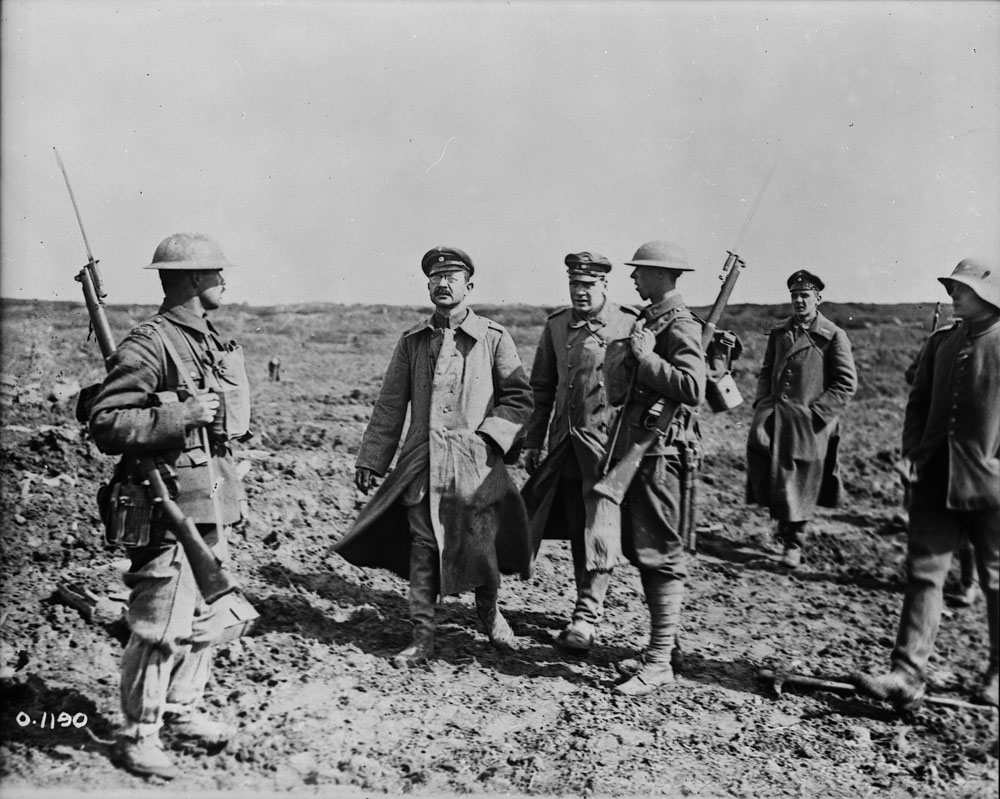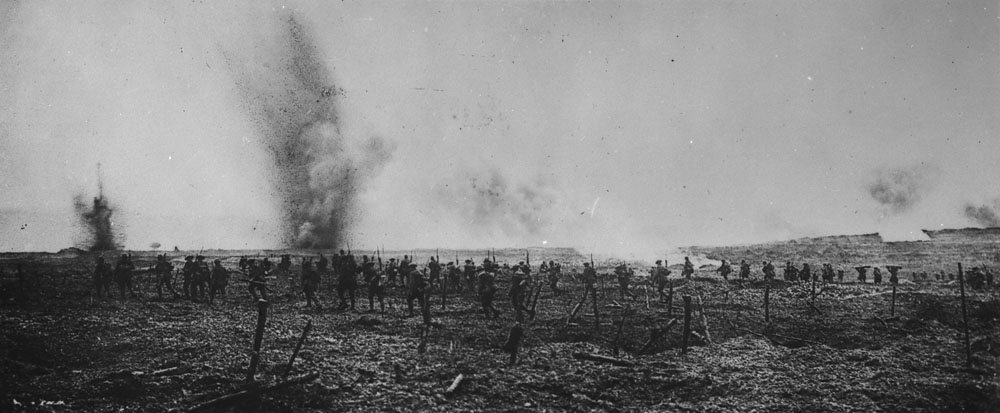Vimy Ridge is a commanding seven kilometre-long ridge situated on the western edge of the Douai Plains northeast of Arras in northern France. During the First World War it was heavily fortified with machine gun nests, dugouts, and was occupied by three divisions of the German Sixth Army. At 5:30 a.m. on April 9, 1917 – Easter Monday – through wind and sleet, more than 15,000 Canadian infantrymen fought their way up the ridge under heavy German fire. It was the first time that four divisions of the Canadian Expeditionary Force fought together in the War.
The objective was to take control of the German-held high ground to ensure that the southern flank of the Allied Army could advance without suffering German fire. The troops were supported by a creeping barrage involving 80 machine guns per brigade. The Canadian Corps captured most of the ridge during the first day of the attack with the final objective, a fortified knoll outside the village of Givenchy-en-Gohelle, falling on April 12th.

Photo courtesy of Library and Archives Canada.
The Canadian casualties – over 3,598 dead and over 7,000 wounded – was a staggering blow for the Canadian military. But they had succeeded when France had not in previous attempts with total casualties of over 100,000. The German casualties were estimated at 20,000. The Canadian success was the result of excellent planning and communications, aerial mapping, and training of troops and assignment of specialized roles such as machine gunners, grenade throwers and traditional rifles and bayonets. In the weeks leading to the battle Canadian and British infantry had kept up a continuous fire on the ridge killing German and spooking German infantry.

The victory for many symbolizes the forging of Canadian identity through sacrifice and fulfilment of international military obligations. A part of the battleground is a memorial park and the site of the Canadian National Vimy Memorial.
By Adriana A. Davies, CA, Cav. D’Italia, PhD

